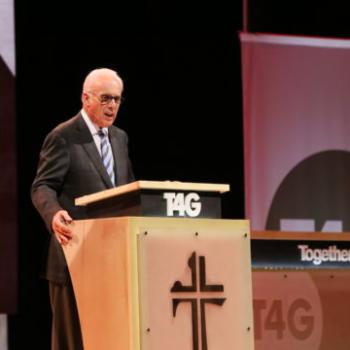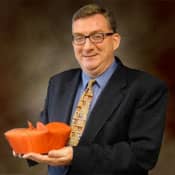By 1800, Americans were moving westward by the thousands, settling the untamed backwoods of Kentucky. Barely a generation had passed since Daniel Boone guided the first white settlers there. Only a few years earlier had the bloody Indian wars ended. Here, in 1805, the centuries-old Dominican Order established its first house in North America, a simple log-cabin like the one Abraham Lincoln would be born in a few years later. Its founder was Edward Fenwick: teacher, pastor, frontier missionary, and Ohio's first Catholic bishop.
Fenwick was born far from the frontier on a Maryland plantation, on August 19, 1768, and was baptized in the family's private chapel. The Fenwicks were an old English Catholic family that settled in Maryland, the birthplace of American Catholicism, during the 1600s. Of the thirteen original colonies, only there did Catholics exist in any sizeable number; only there could they freely practice their faith.
During the American Revolution, Edward's father was a Colonel in the Continental Army. At sixteen, the boy left home to study in Belgium at a Dominican school. (Many Maryland Catholics sent their sons to study at Catholic schools in Europe, since America had none.) Here he discerned a religious vocation, and in 1788 joined the Dominicans. Five years later, he was ordained in Belgium, teaching at his alma mater. The French Revolution, however, forced the college to relocate to England.
For the next decade, Father Fenwick taught at their school outside of London. Two decades had passed since he saw home, and he dreamed of starting a Dominican house in the American nation. In 1804, he got permission to begin a house in Kentucky, where many Maryland Catholics had emigrated since the 1780s. There were about eight thousand Catholics there, with few priests to serve them.
Priests were essentially circuit riders back then, searching for Catholics wherever they might be found. Fenwick often rode between fifty and three hundred miles visiting the sick and administering the sacraments. "We are everywhere," he wrote, "followed and pestered for confession. Many have not been for three, four, eight, and twelve years." One biographer writes that his saddle was "his house of prayer, for he read his breviary while riding from one place to another."
In 1806, Fenwick purchased a 500-acre plantation near Springfield, Kentucky. He named it for the Dominican St. Rose of Lima (1586-1617), the first native of the Americas to be canonized. Within a few years, the property housed a church, a religious house, and the College of St. Thomas Aquinas. The school was among the first in the area, and future Confederate President Jefferson Davis was among its earliest students.
In 1808, Fenwick turned his eyes toward Ohio, where many Catholics had moved. He rode there "in search of stray sheep," wherever there were Catholics or rumors of Catholics. As his biographer notes, it could be dangerous. Sometimes he got lost and had to "spend the night in the backwoods . . . still infested with wolves and other beasts of prey." On one occasion, he baptized an entire settlement:
A short time ago, a colony of thirteen families, having by chance found a Catholic book, conceived the desire of embracing our holy religion; and, although I was three hundred miles away, they wrote me a letter, in which they made their desire known to me. I made my way to this colony, which I had the good fortune to find, instructed them in all those things that are necessary to be known, and had the consolation of baptizing them.
He answered many calls for help, but not all were emergencies:
He was sent for by an old lady, not a Catholic, who lived a distance of four miles. Having no horse at the time, he was compelled to perform the journey on foot, in a dark night, and over bad roads. On reaching the house, he found the old lady sitting by the fire, surrounded by her friends. She stated to him very gravely that, knowing him to be a kind-hearted man, she had sent for him to procure twenty-five cents' worth of tobacco, of which she then stood greatly in need!
In time, though, he brought order to Catholic life in Ohio, a rapidly growing state. The first churches, one historian notes, were "plain, barn-like structures of plank . . . small, unpretentious, and showing the poverty of the early settlers." In 1821, Fenwick was named Bishop of Cincinnati, a diocese covering all Ohio (and the adjoining regions). Initially, he refused, but his superiors persuaded him to accept.
Over the next decade, Bishop Fenwick erected a cathedral, brought women religious to Ohio, and recruited more priests. In 1829, he founded a seminary, and two years later he established The Catholic Telegraph, a newspaper still running today. He continued to travel throughout his diocese, and in 1832 he caught cholera during a trip to northern Ohio. He died on September 26, 1832. By the time of Fenwick's death, Ohio had 22 churches and 24 priests. When he first arrived there had been none.





